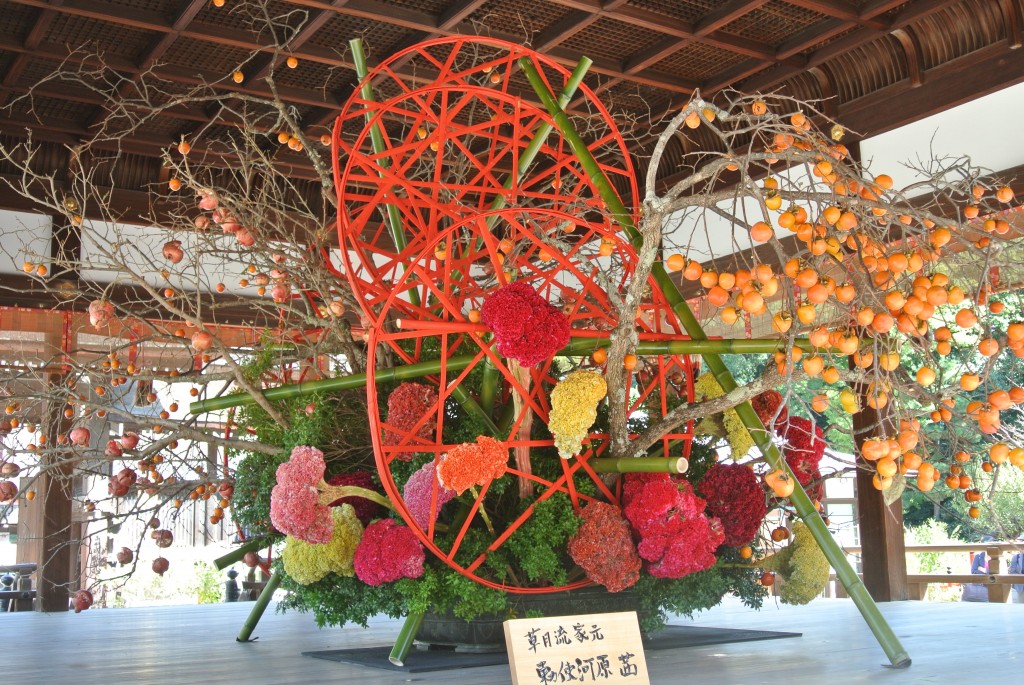
The main display at the heart of Shimogamo by the head of the Sougetsuryu school of ikebana
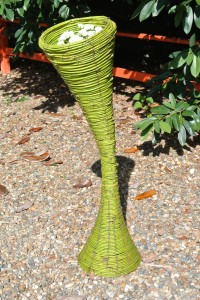
Tradtional art, modern style
My local shrine, Shimogamo Jinja in Kyoto, is presently putting on an art exhibition of ikebana. The displays line the entrance to the shrine, with some set against a backdrop of woods and others framed by the vermilion of the World Heritage buildings.
You often find exhibitions of art and martial arts at shrines. Sumo, dance, horse-riding events too are put on for the pleasure of the kami. What unites them all is that they’re all traditional. You’re not likely to see an exhibit of hip-hop dancing at a shrine, because the ancestral kami housed there wouldn’t appreciate it. On the other hand, ethereal gagaku (court music) and stately kagura ( ritual dance) are just what the kami like.
It can be seen as part of the shamanistic heritage of Shinto, in that the religion is not just spiritual but cultural. In ancient times shamans were wise men or women who transmitted the cultural and historical essence of their tribe to the next generation. Shinto plays a similar role, which is why for some it is ‘a religion of Japaneseness.’
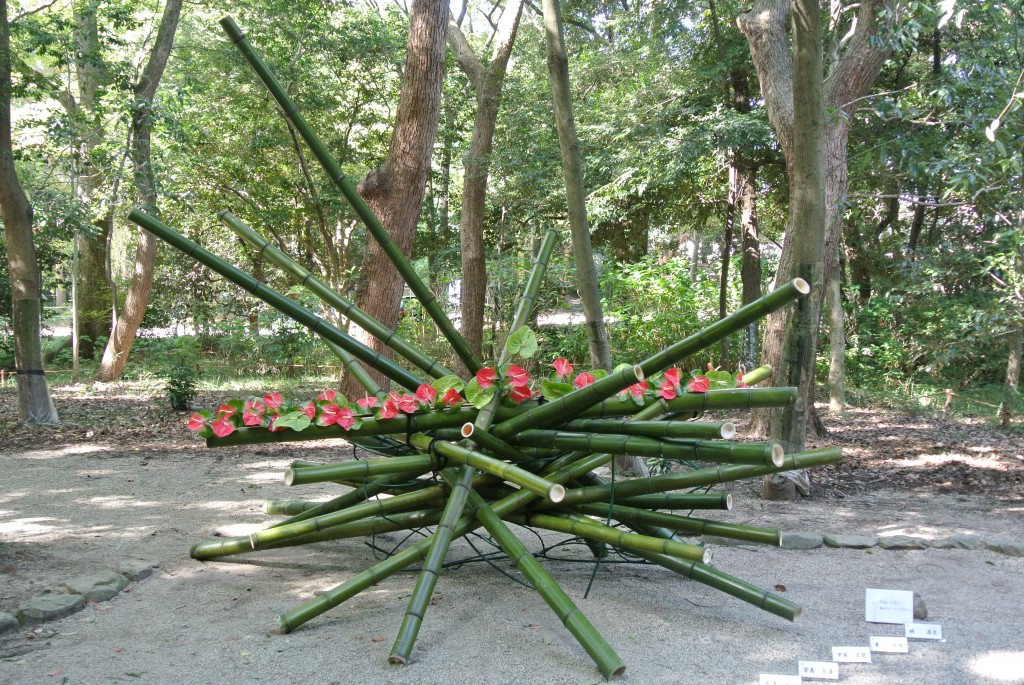
Blending in - or sticking out?
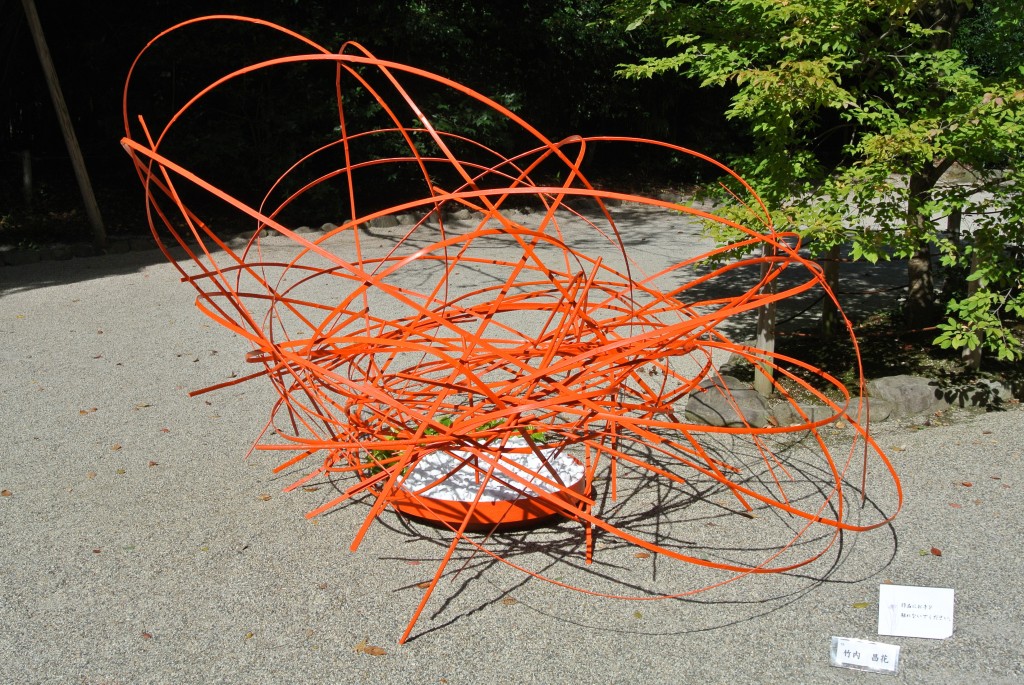
All tied up and nowhere to go
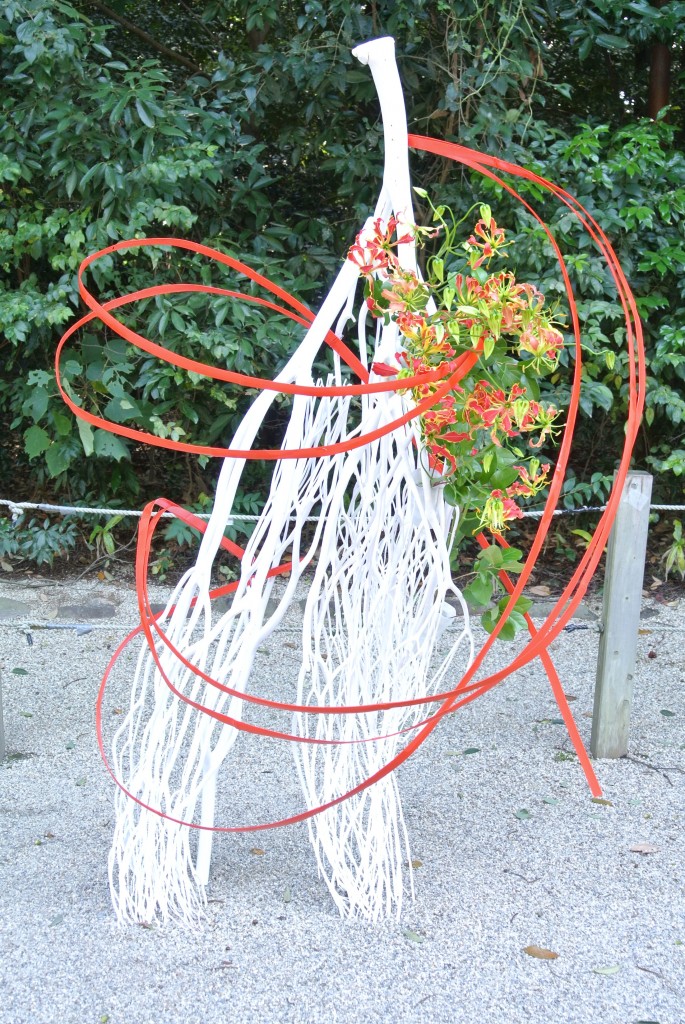
White wonder with a splash of red
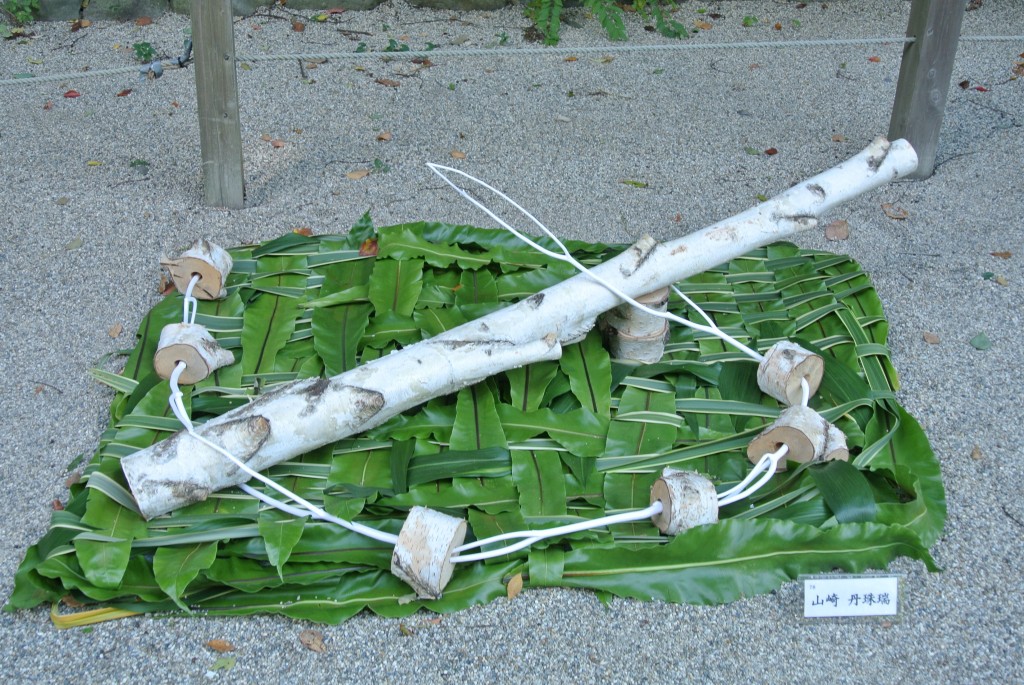
A study in contrasts
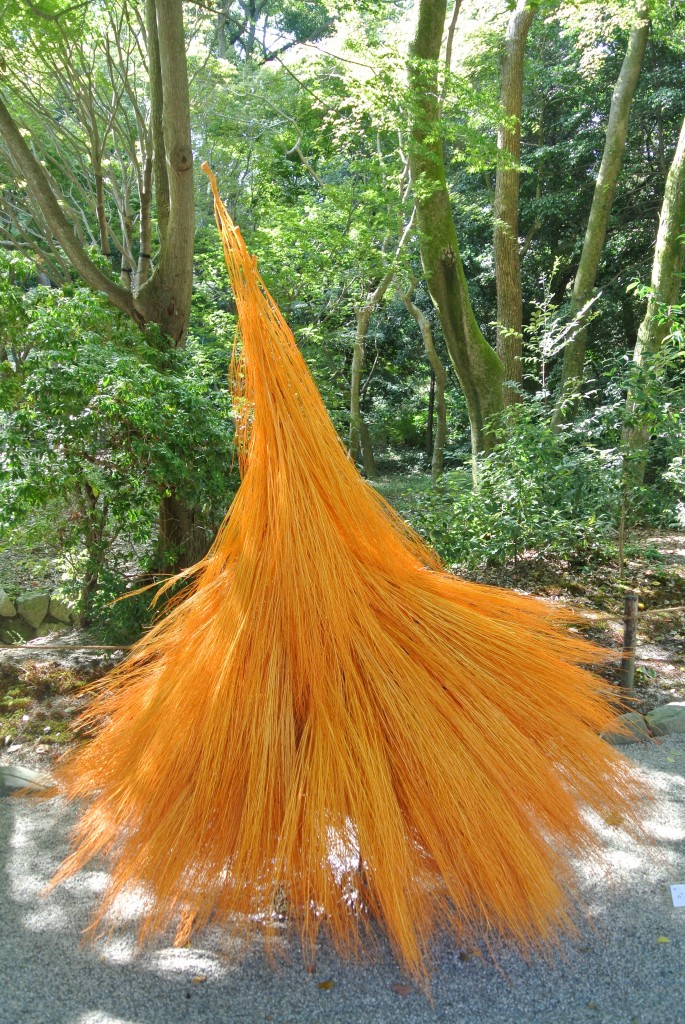
Orange fantasy in a green woodland

Leave a Reply